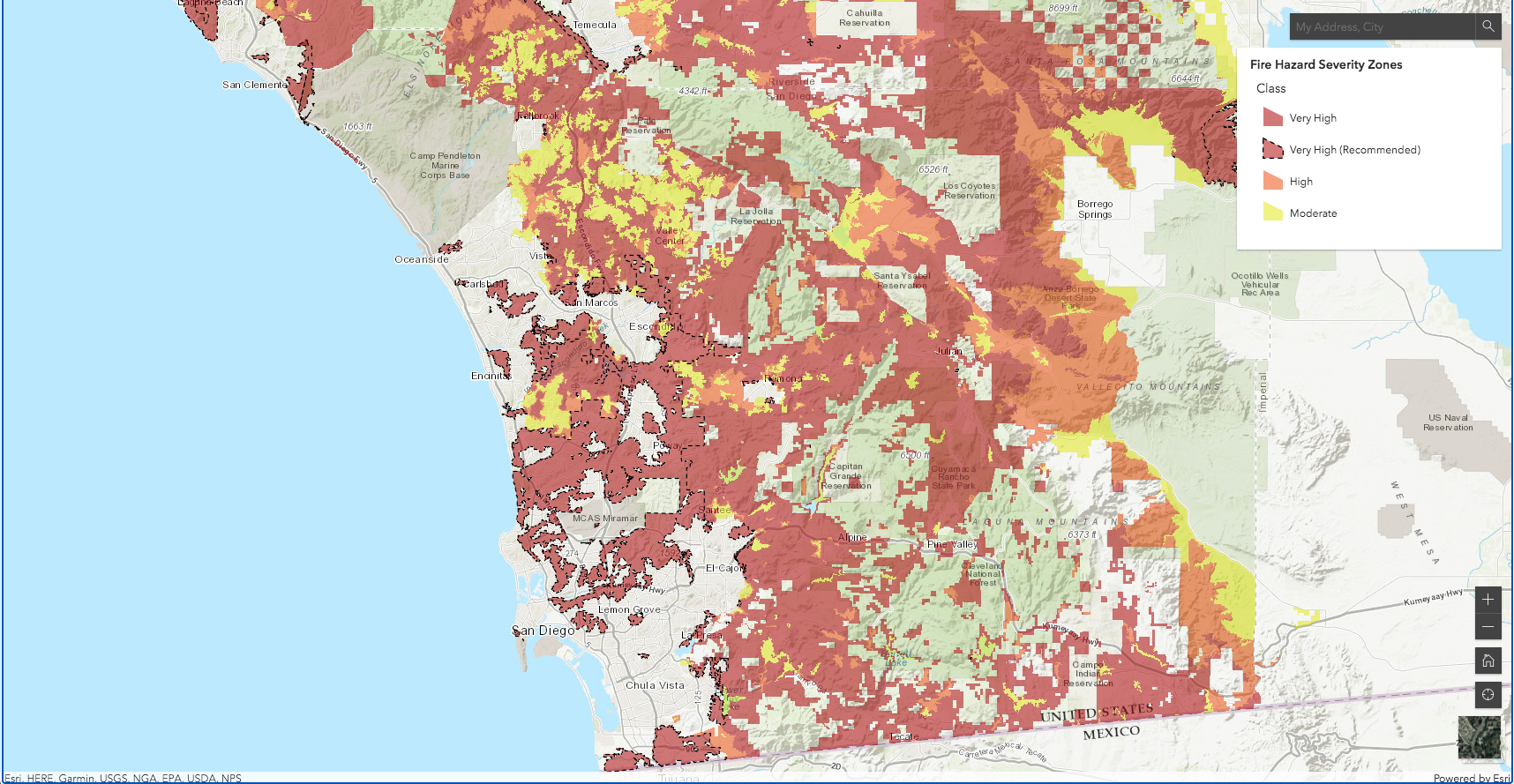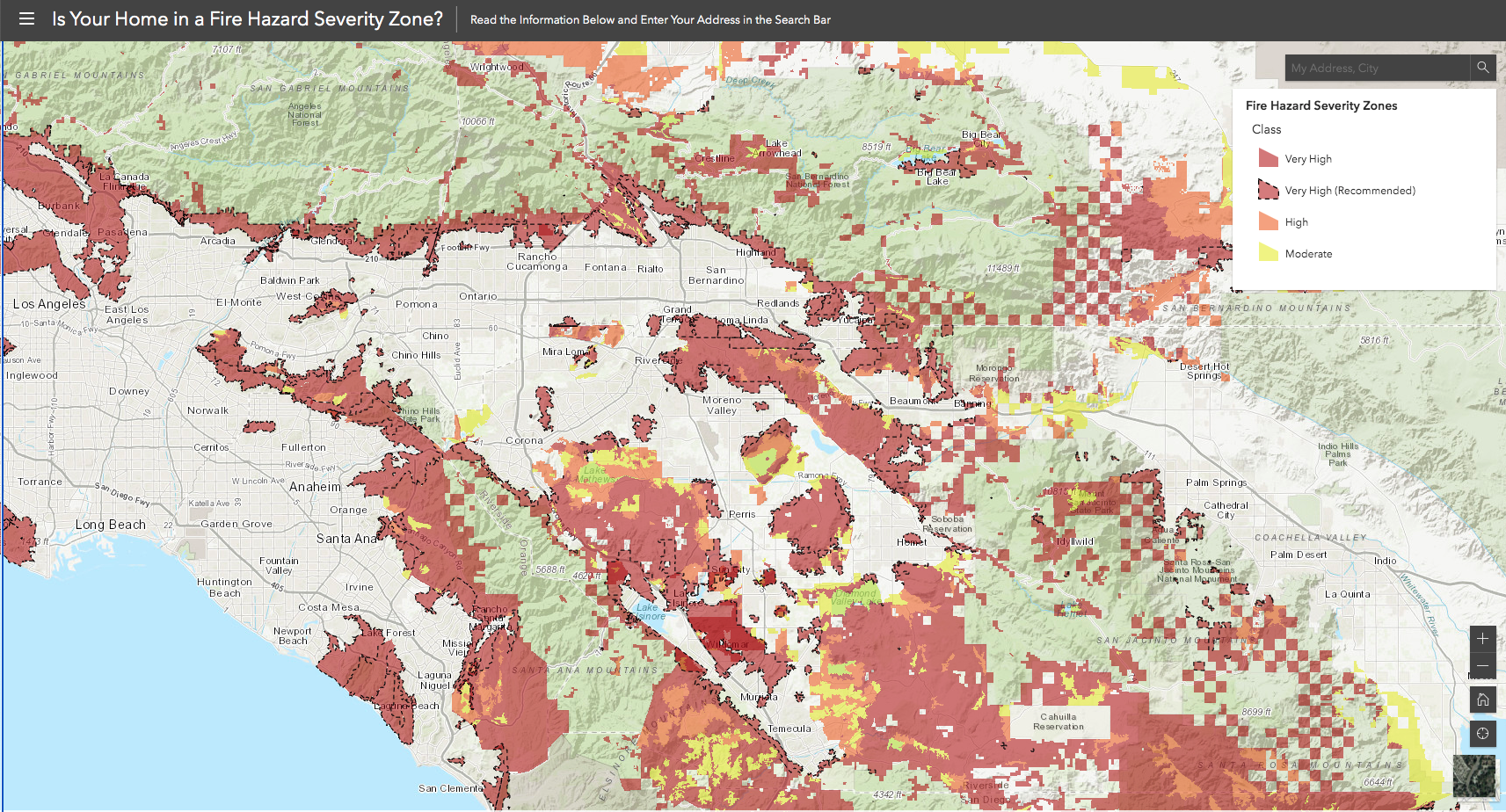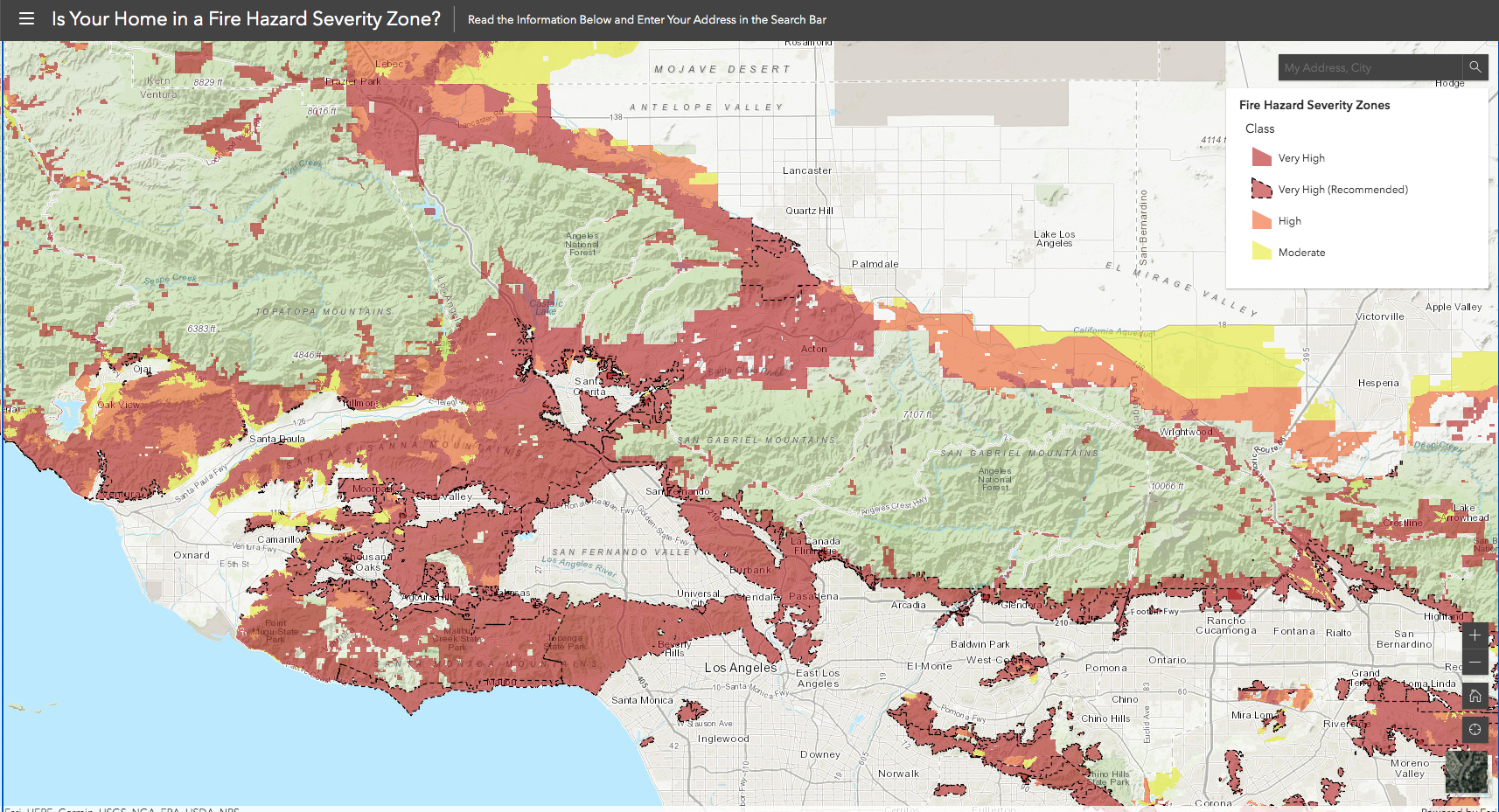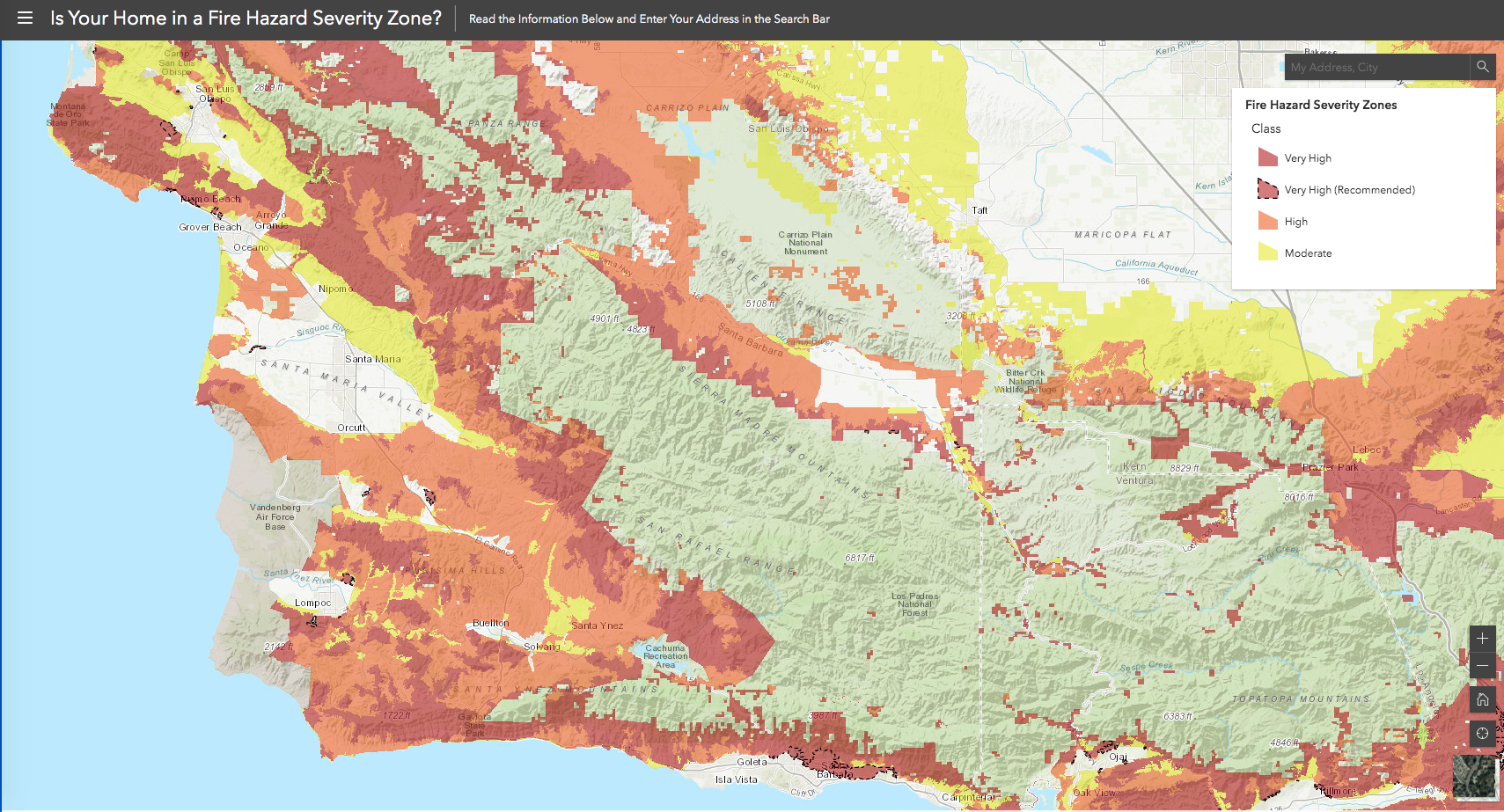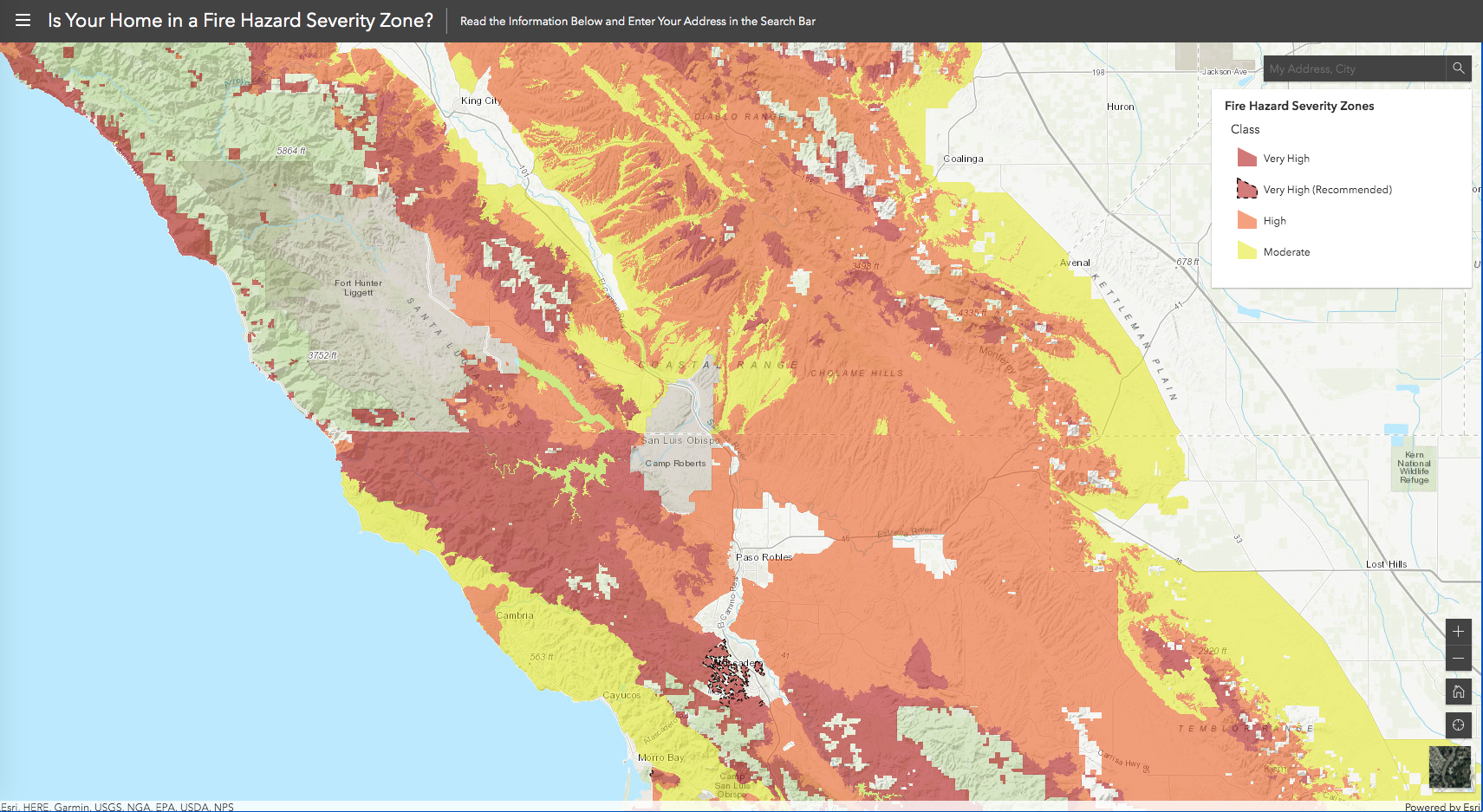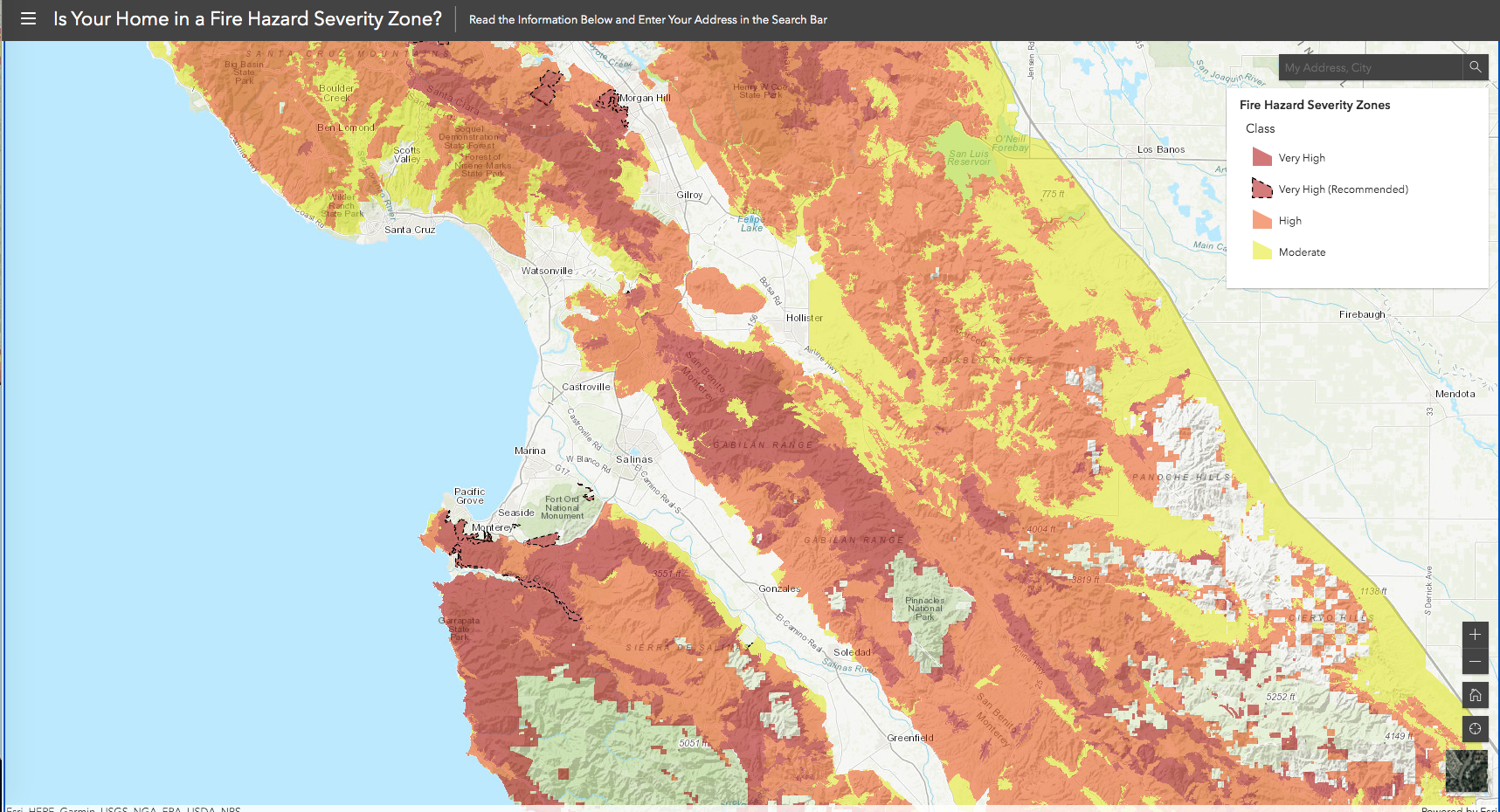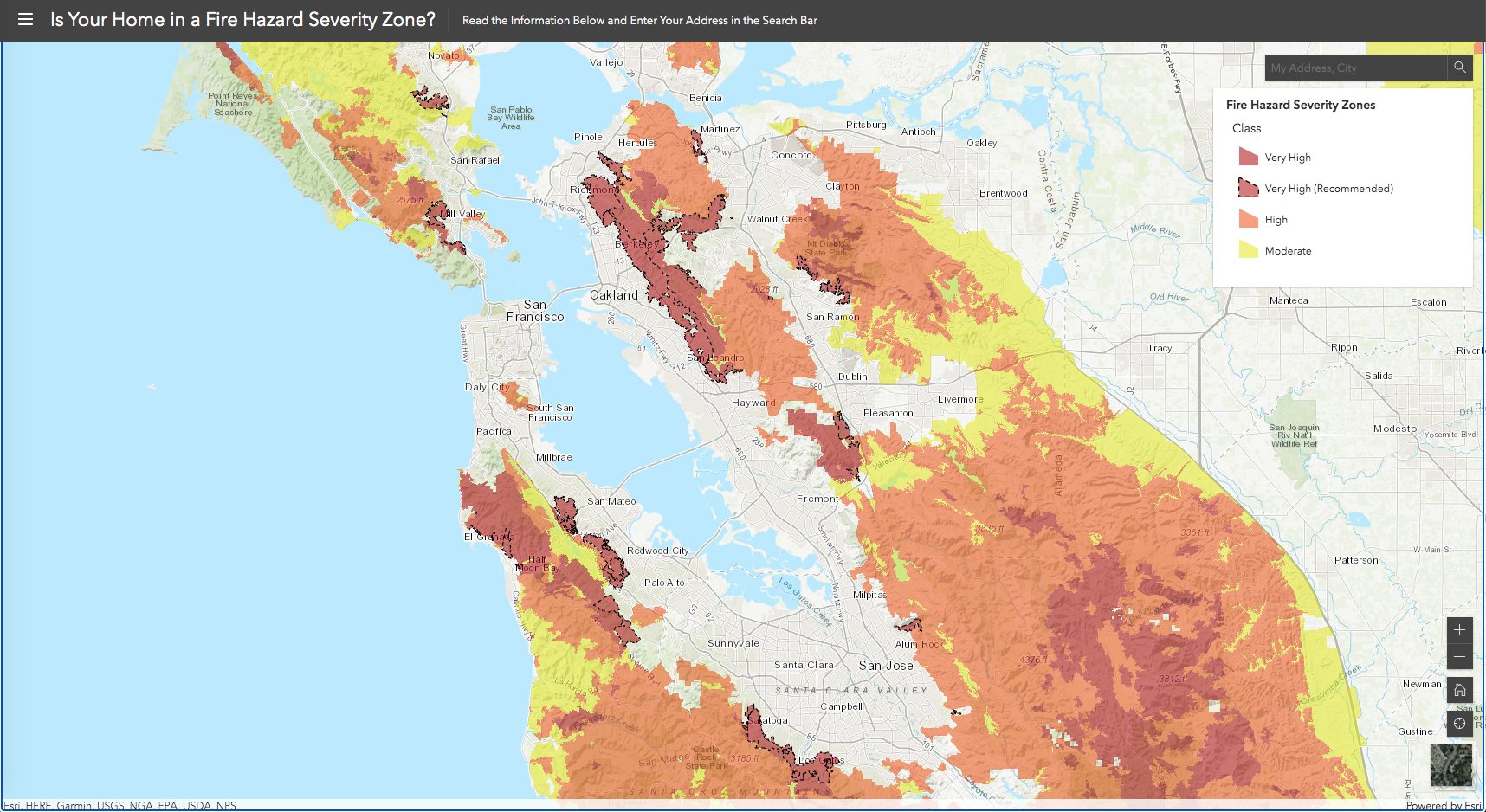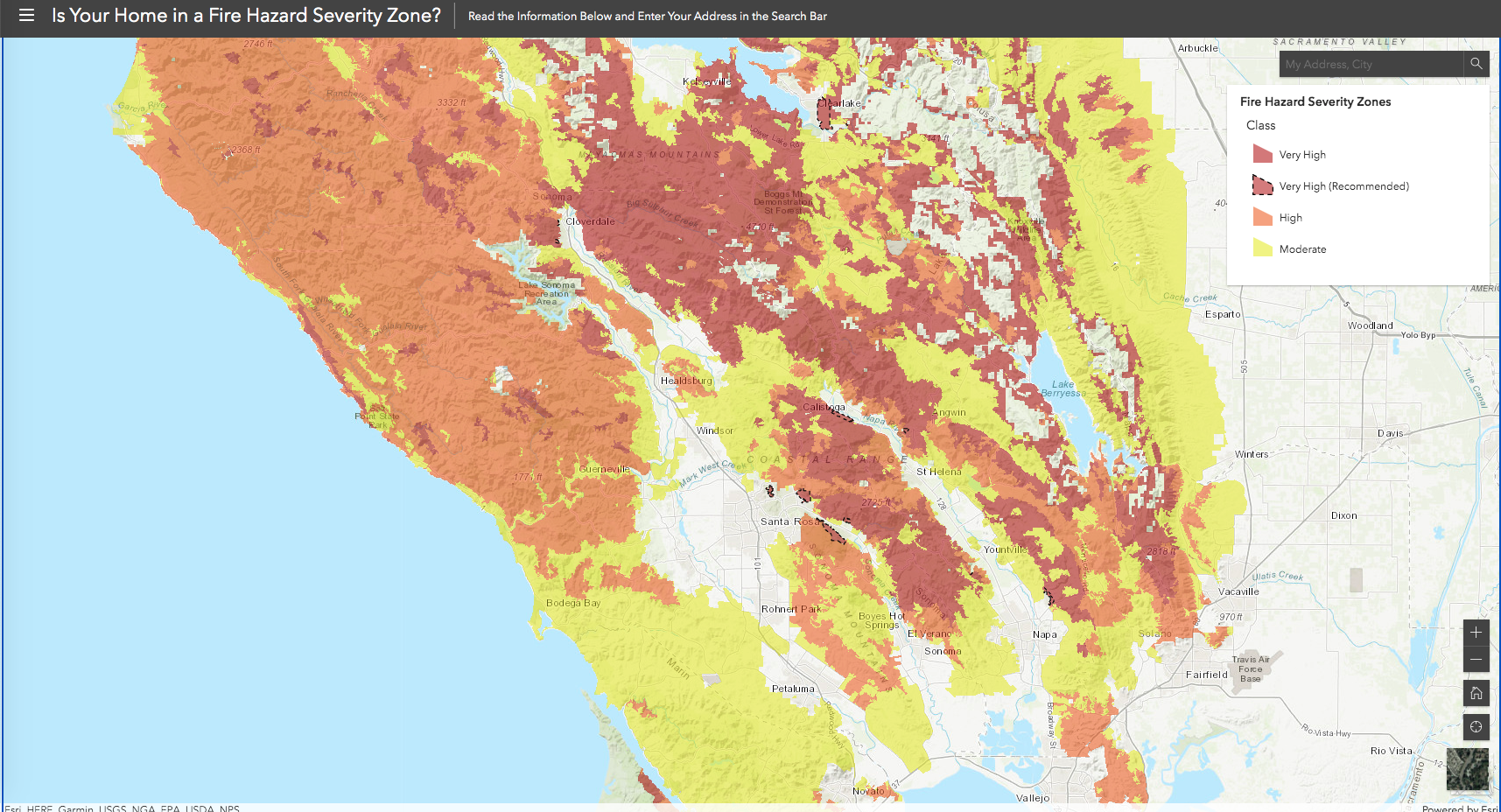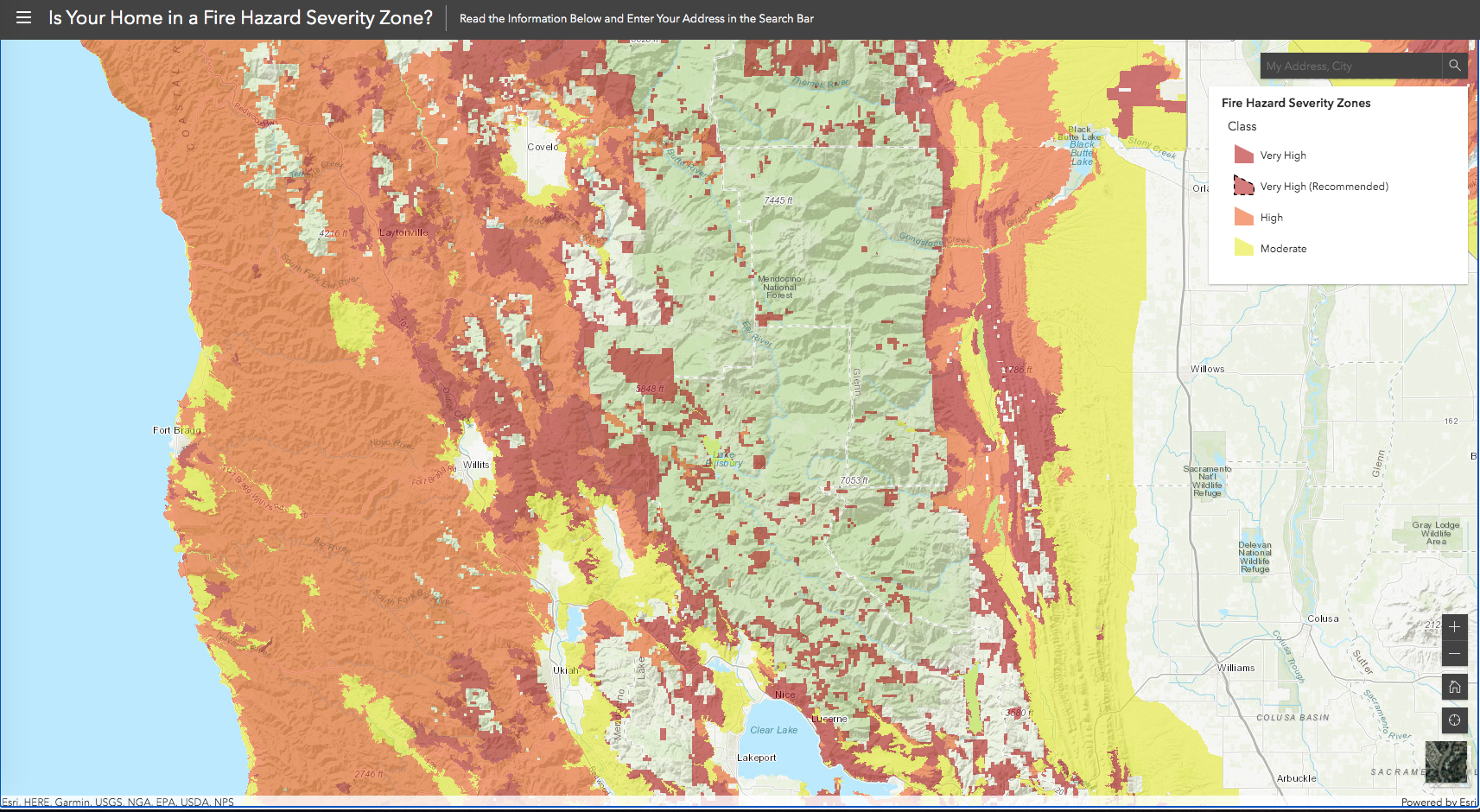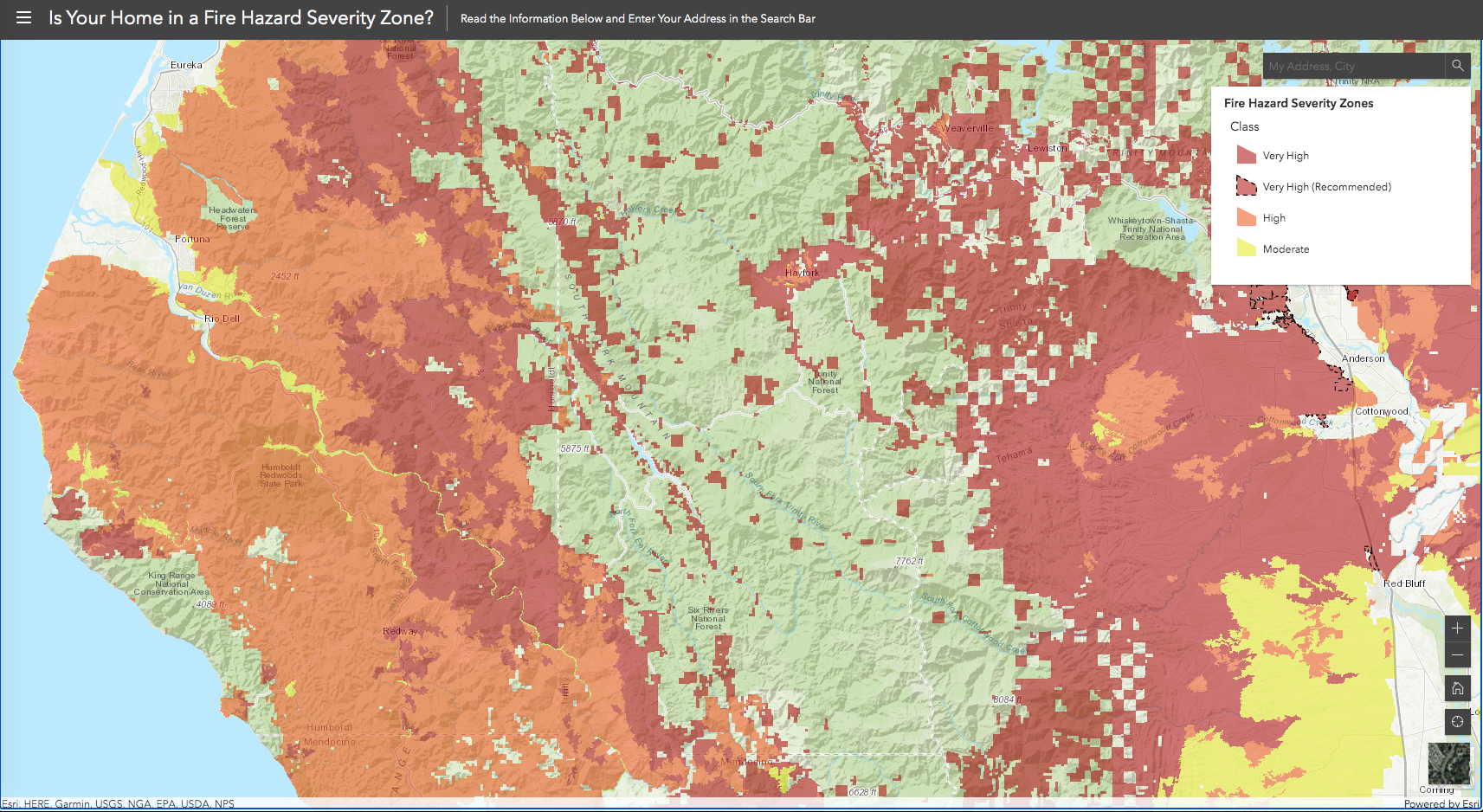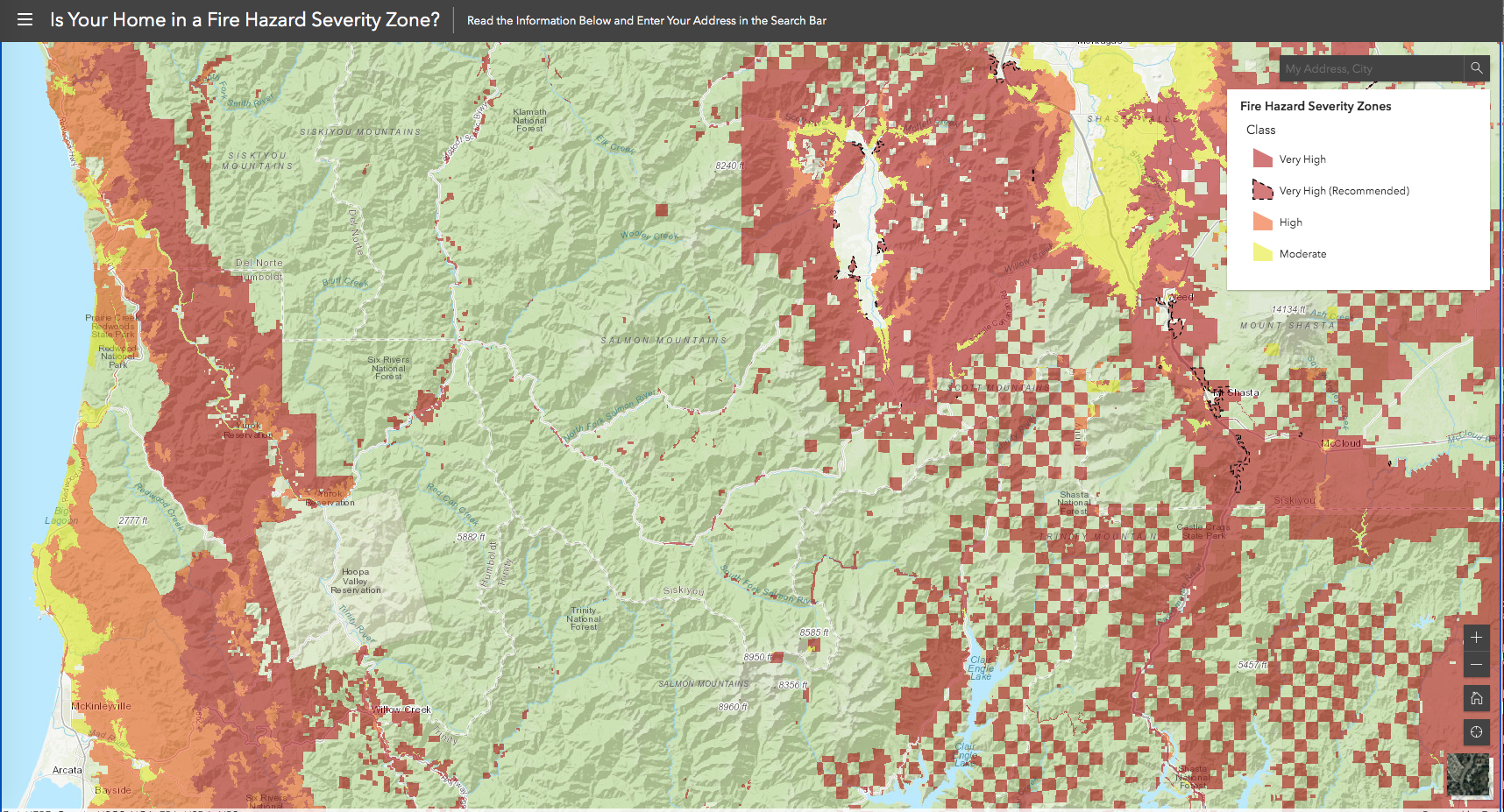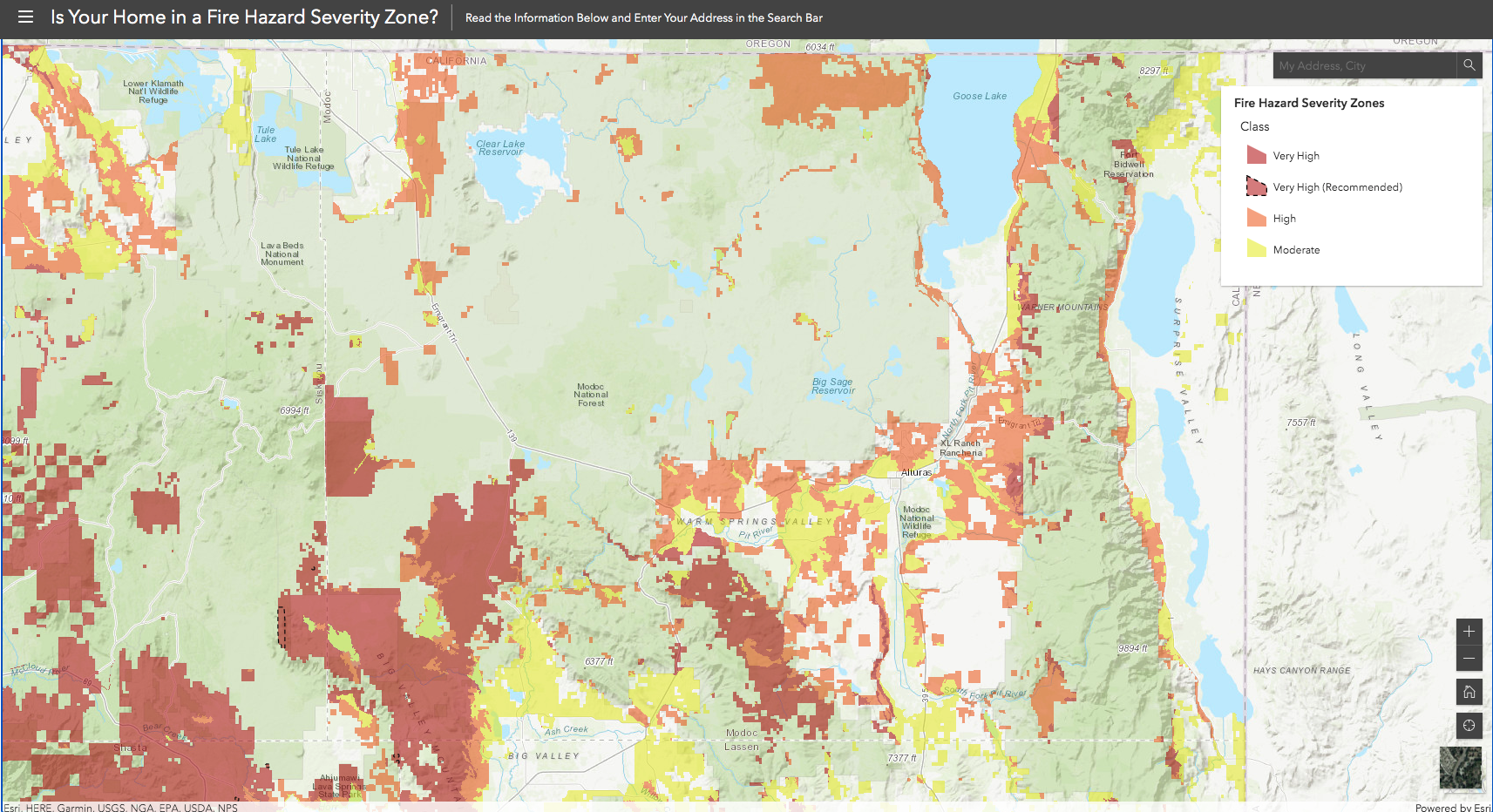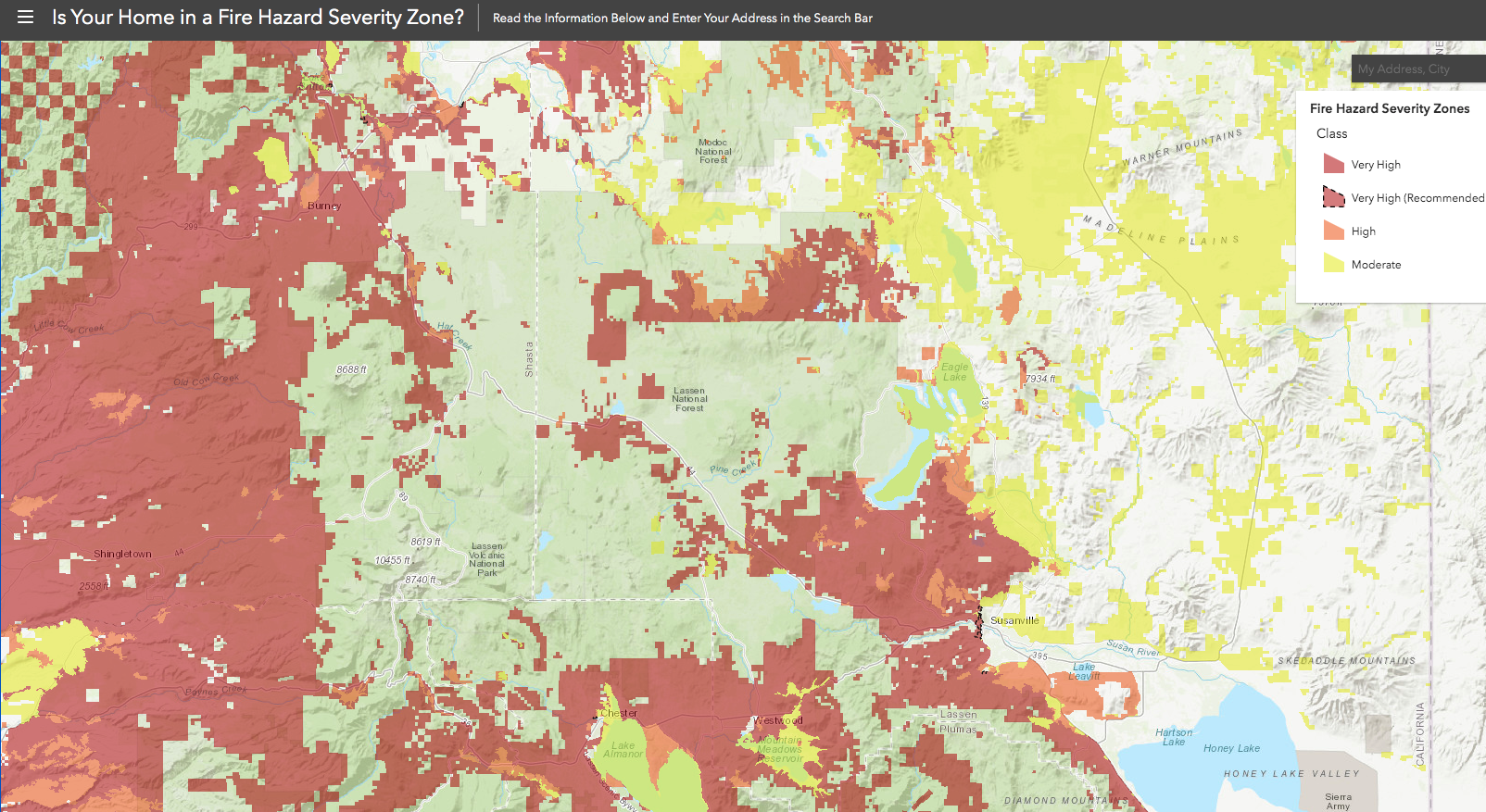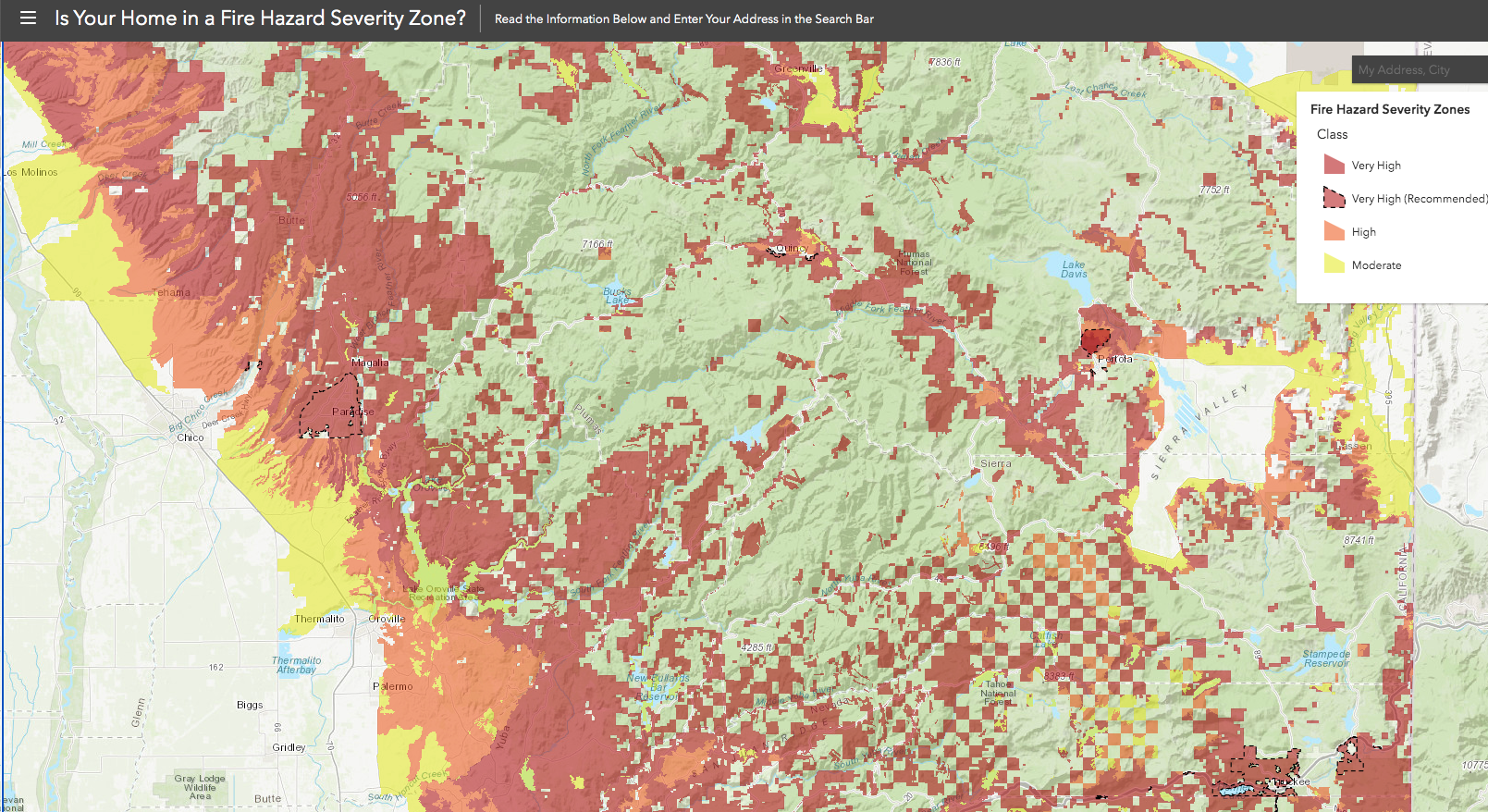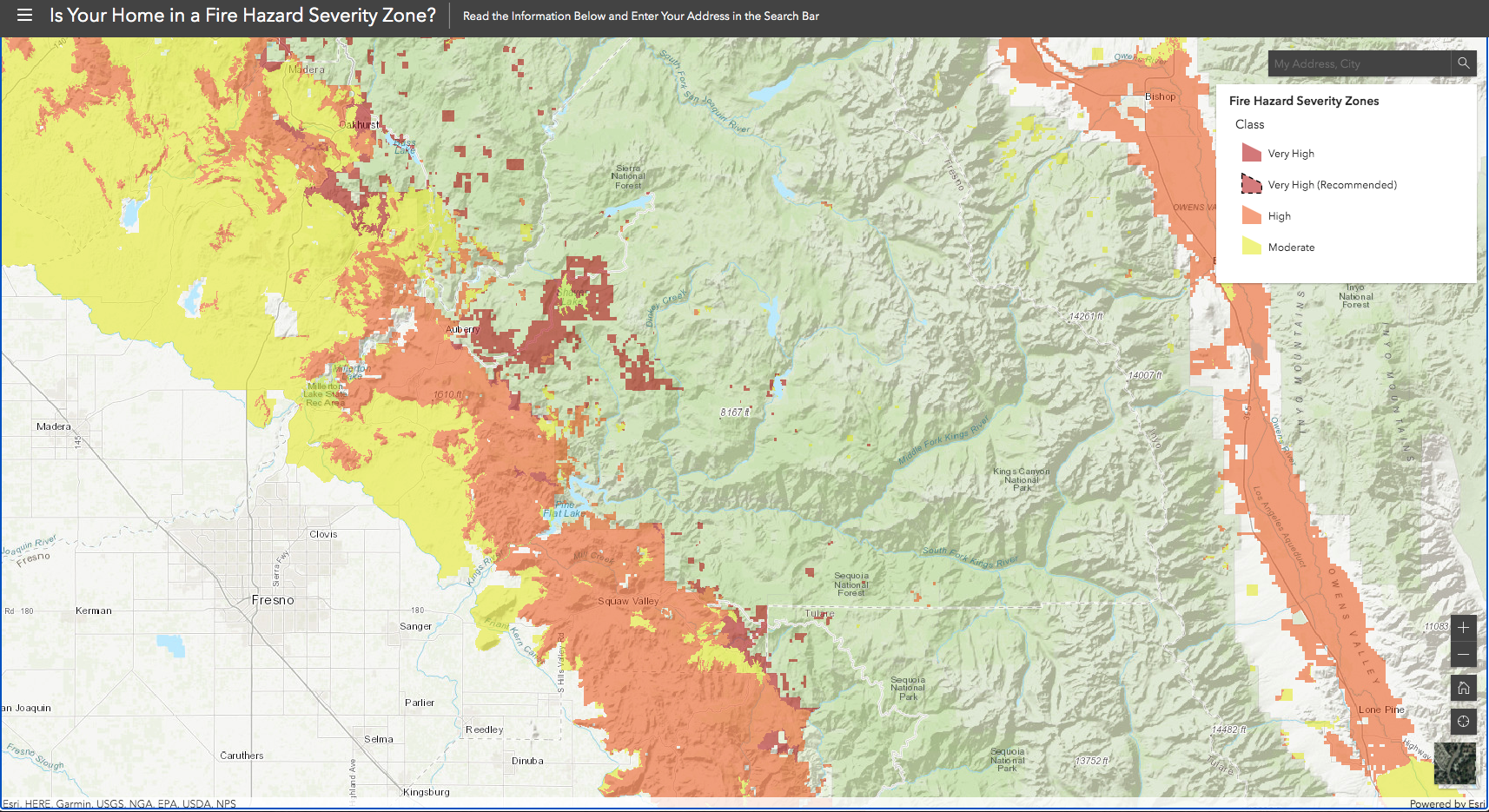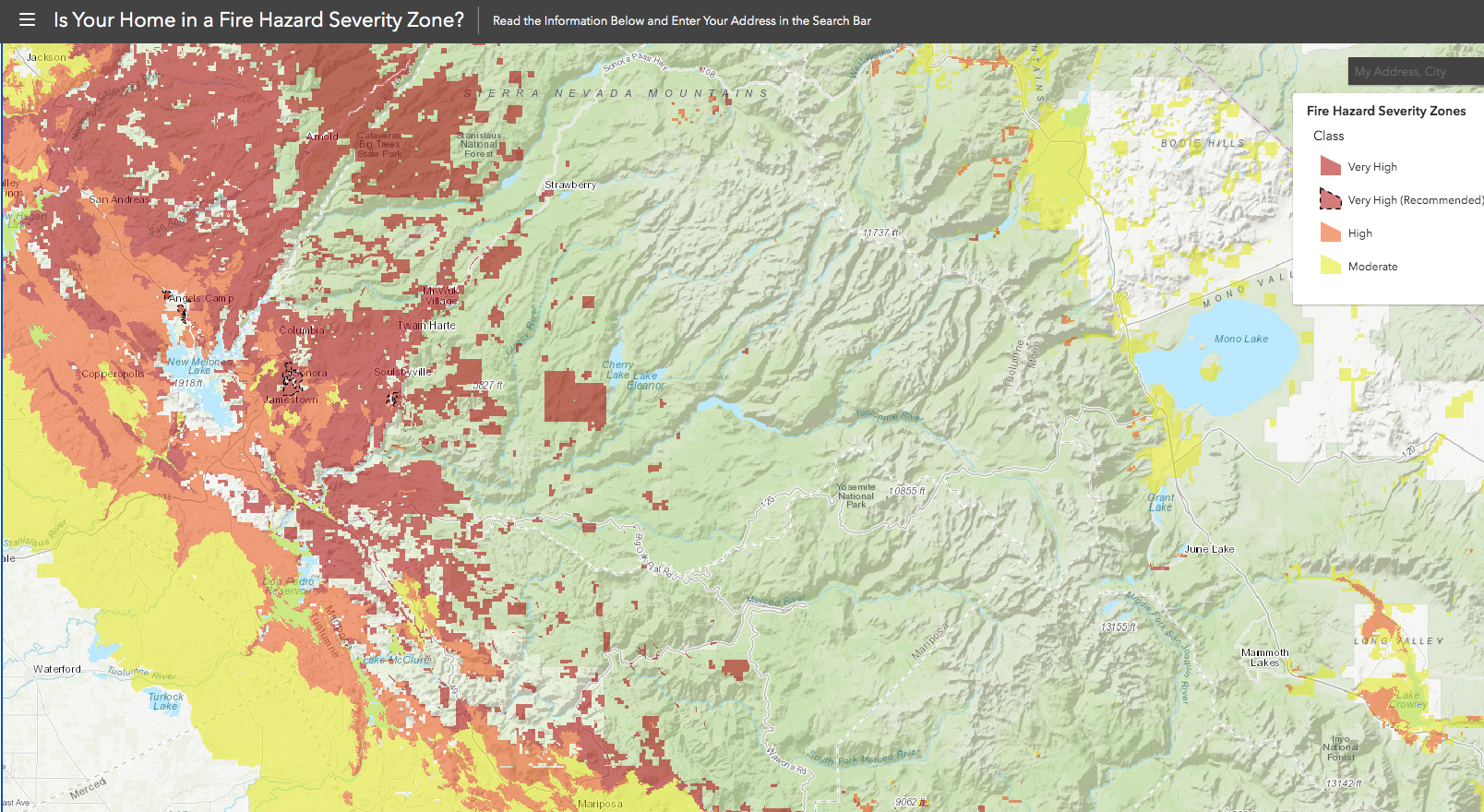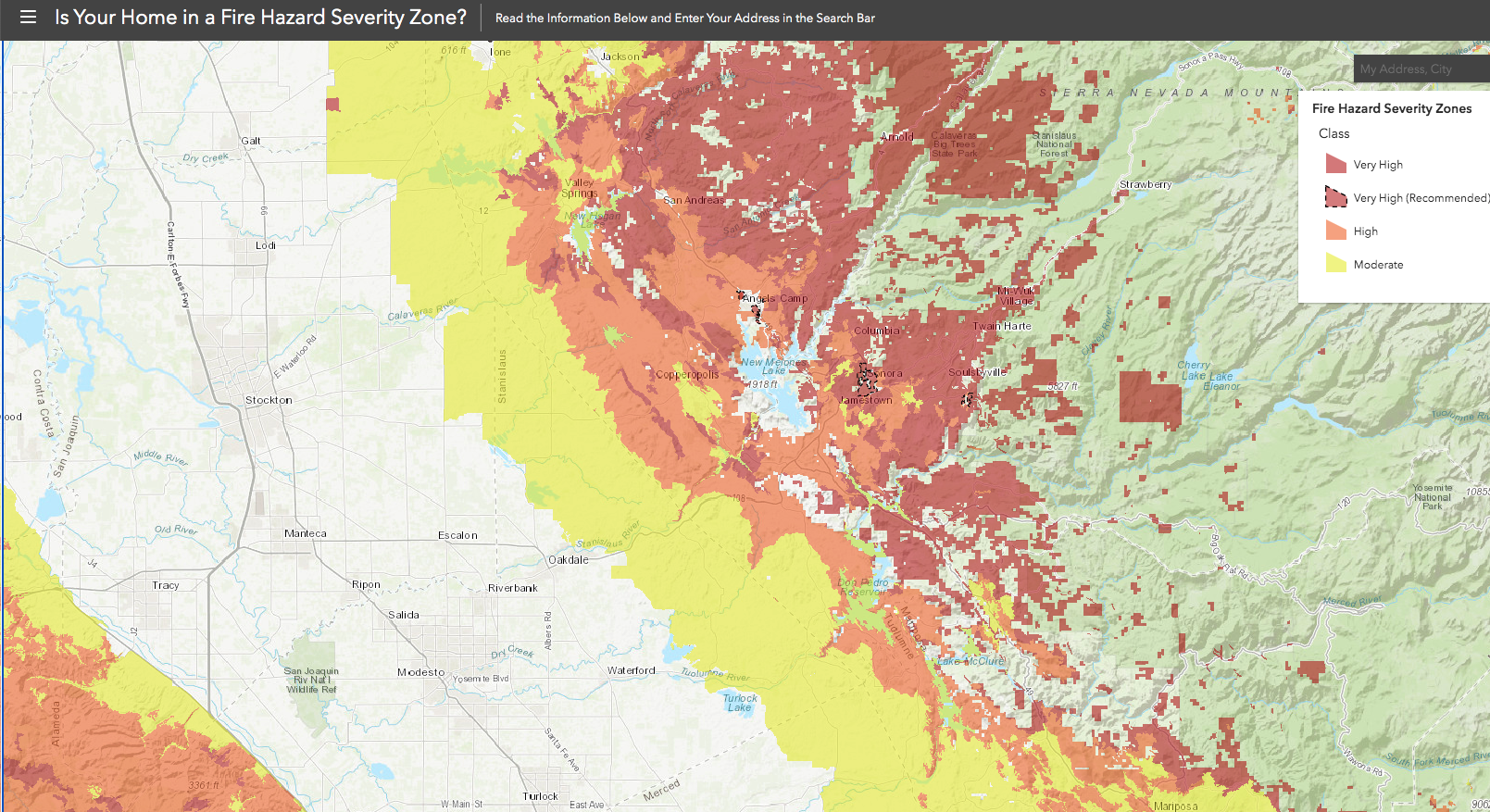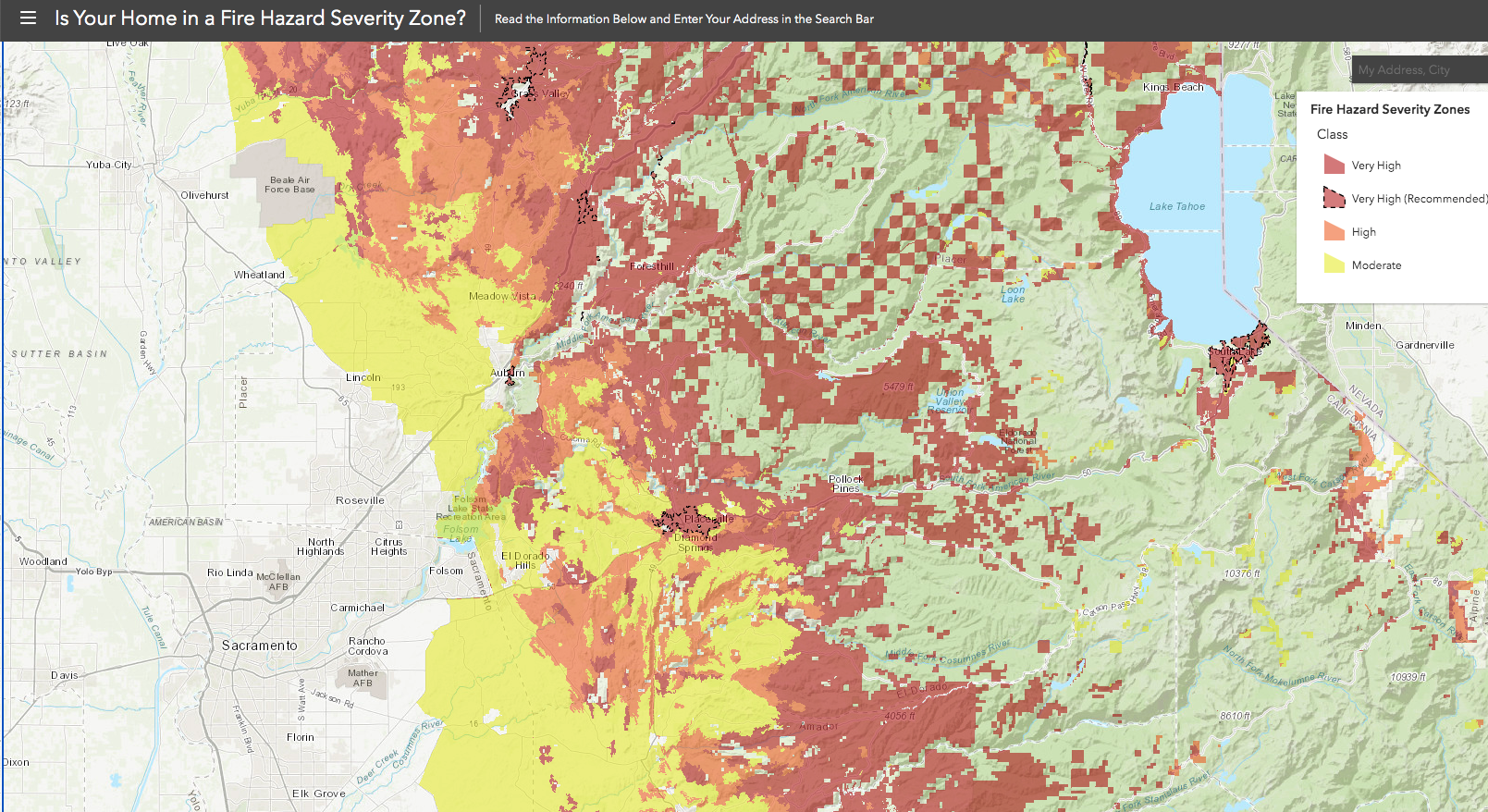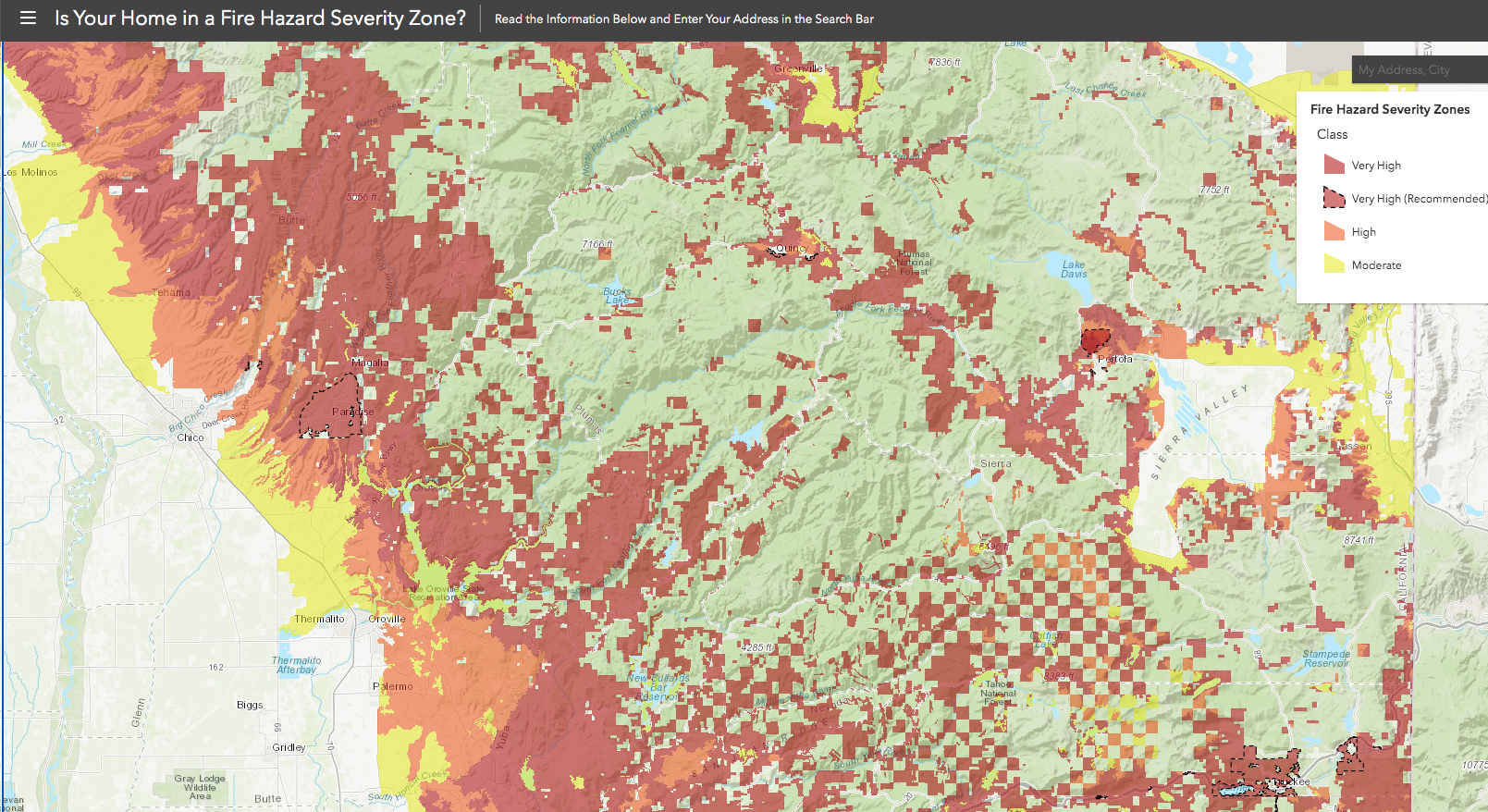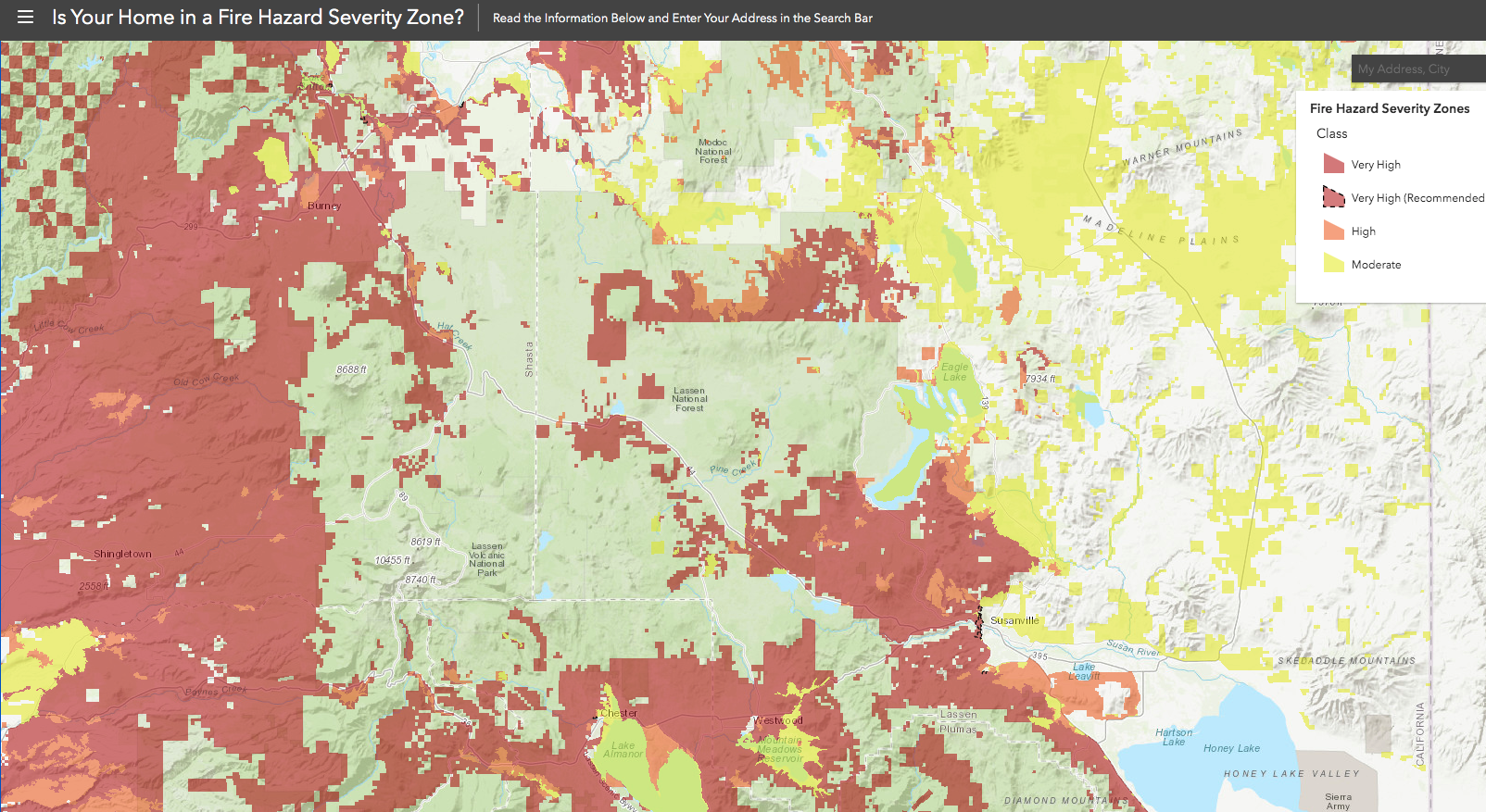Oct. 20, 2021
(The slideshow above shows the hundreds of California fire severity zones. The slides start with San Diego, head north on the coast to Oregon, then turn inland and head south from Clear Lake Reservoir in NorCal to Indio in SoCal. One in six single-family homes in California is within a red, orange or yellow high-risk fire zone.)
In adopting Senate Bill 9, California’s legislature and governor ended single-family zoning in hundreds of fire severity zones, allowing four homes on single-family lots. SB 9 lets builders override years of local planning, and weakens the state’s promise to require defensible space around homes in fire zones.
More than 71% of California voters opposed SB 9. We may never know if Gov. Newsom and the legislators who pushed hard for SB 9 understood that they were promoting the upzoning of areas that have burned repeatedly and are likely to burn again.
Do you live in a California fire severity zone? Search your address on the map by Los Padres ForestWatch, by clicking here.
(Note: We use the searchable map by the non-profit Los Padres ForestWatch in the slideshow above. A similar map by CAL FIRE has a broken Search function that obliterates street names, making it useless. Note that Local Responsibility Areas are no longer a “recommendation” cities can ignore. Local Responsibility Areas are now state-mandated.)
It’s time to arm your local city council or board of supervisors with SB 9 knowledge. Urge them to move quickly to set up safety and environmental parameters by Jan. 1 or as soon after that as possible, that reduce SB 9’s most negative impacts, by adopting “objective standards”:
- Watch video of Daniel Skolnick at Livable California’s Oct. 16 teleconference on how to set local standards for SB 9. Mr. Skolnick is Senior Planning Deputy for Councilman Paul Koretz of the 5th District of Los Angeles, an outspoken critic of SB 9 and SB 10. Daniel is a member of the Urban Land Institute.
- Restrict SB 9 projects on fire evacuation routes in your town, to avert tragedies like City of Paradise. Evidence from CAL FIRE’s Board of Forestry, in its 2021 proposed Fire Safe Regulation, says a road must be at least 14 feet wide to absorb development involving subdivision of land. SB 9 is based upon subdividing.
- Require “defensible space” around new homes. SB 9 sets a very narrow 4-foot “setback” rule, ignoring the intent of AB 3074 (2020) requiring zero to five feet of defensible space around new homes to create an “ember-resistant zone.” That will be hard to achieve when 4 homes are built where 1 is now, with a narrow 4-foot setback.
From 2014 to 2020, more than 50,000 structures were damaged or destroyed by California wildfires. CAL FIRE found: “Based on historical data of the residential structures that catch fire, 93 percent will be destroyed.” In CAL FIRE’s October 2020 budget request, it stated that “In addition to providing a safe space for firefighters to defend a home, defensible space is essential to improve a home’s chance of surviving a wildfire.”
During the Camp Fire, CAL FIRE found, “a home was five times more likely to be destroyed by the fire if it was noncompliant with PRC section 4291” — the state’s code overseeing defensible space.

